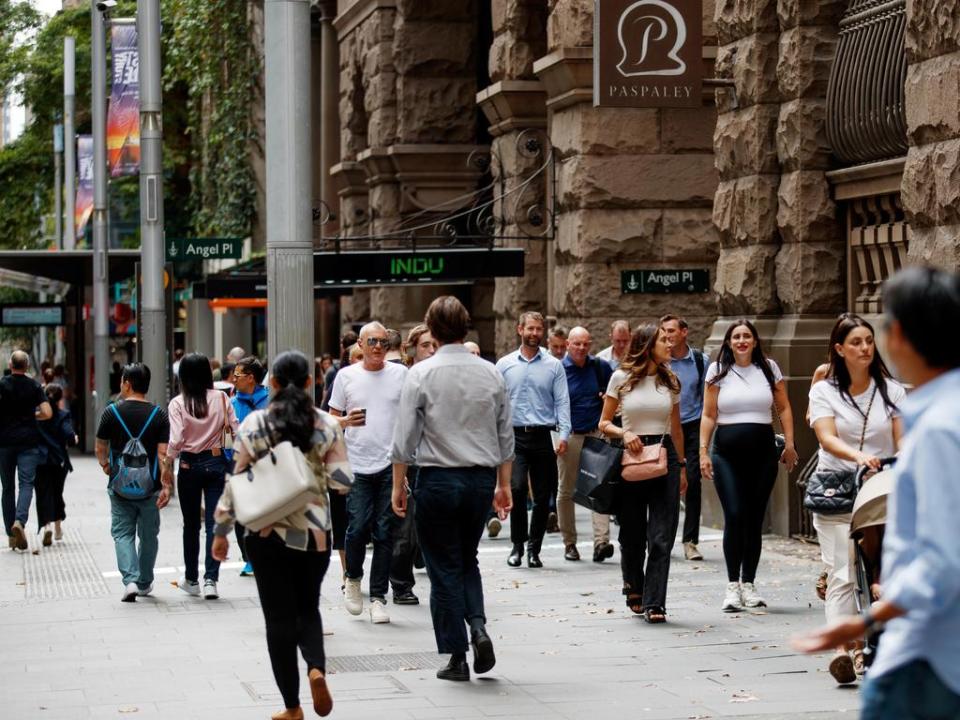Aussie workers most burnt-out in the world

Alarming results from a new global survey found one group of Aussie workers were the most burnt out in the world.
More than 9000 knowledge workers across the globe were surveyed, including 900 Australians who said they felt burnt out at work and were trying to do more with less resources in the current economic climate.
Others found technology was moving too quickly for them to keep up.
About 62 per cent of respondents indicated they wanted a reduced workload, about 41 per cent wanted more transparency from their leadership and another 40 per cent said they wanted more time to get tasks done to reduce burnout.
The UiPath survey included people who worked in industries such as government, education, finance, real estate and healthcare.

An expert in organisational behaviour said worker burnout occurred when stress was left unaddressed for a long period of time and was characterised by emotional, mental and physical exhaustion.
Griffith Business School senior lecturer Carys Chan said overtime burnout led to withdrawal from relationships, work or people having a negative outlook like cynicism.
“Generally, people have low energy or no interest in anything,” she said.
Ms Chan said knowledge workers were more susceptible to burnout than the average population because of the nature of their jobs. They usually worked in environments that evolved quickly and were at the forefront of technological advances.
Another contributing factor to worker burnout was the fallout from Covid-19. As people continued to work remotely or hybrid, they lost their social connection at work.

“In certain parts of Australia there were particularly harsh prolonged lockdowns and certain central business districts and organisations have downscaled their office sizes,” Ms Chan said.
“There is still quite a lot of hybrid and remote working happening across Australia, compared to other places, which could be contributing to that sense of isolation and burnout.
“Burnout is not solely driven by workload, it could just be a sense of isolation and other people not understanding the work they are putting in.”
While there is no magic bullet to avoid worker burnout, Ms Chan said the best thing employers could do was provide their staff with autonomy and sufficient resources to do their work.
“If you provide your employees with autonomy and control over their own job scope and workload, and if you staff your team with sufficient resources and manpower, then a lot of these things would not happen,” she said.

One employer tackling worker burnout is RSM Australia, which found staff who did interesting work tended to be happier and more engaged.
RSM chief digital officer Paul Joseph said the organisation did not want their staff doing repetitive, boring or unnecessary tasks that led people to feeling overwhelmed then burnt out.
Mr Joseph said technology played a huge part in preventing worker burnout, particularly around automating repetitive and mundane tasks.
“Being able to identify those tasks that are low value and repetitive that can be confined and automated assisted us improving the quality of the employee experience,” he said.
“There is a direct link between the successful implementation of technology and the ability to address burnout.”

Mr Joseph said automating tasks through technology and AI in the workplace opened up opportunities for workers to do more meaningful and engaging work.
“People can spend more time meeting with clients and work on developing their clients’ goals and objectives,” he said.
“It could free them up to develop their own skills or they could take advantage of flexible work policies, attending their child’s school assemblies or caring for a family member.
“It all adds up, it is definitely a bonus.”

This was the fourth global knowledge worker survey conducted by UiPath and the first time a significant number of Australians took part.
UiPath head of solutions and customer advisory Yelena Galstian said researchers were able to grasp what workplace burnout looked like in Australia compared with other regions.
“That was a big finding and it was interesting to see there was a big increase in burnout from last year,” she said.

“That is a really interesting space for UiPath because we think about bringing AI and automation together so it empowers employees to free up their time so they are not spending it on mundane activities but on creative pursuits, innovation and more time to collaborate,” Ms Galstian said.
“The respondents who use AI and automation together said they had greater productivity to get tasks done, more accuracy, better job satisfaction, a better work-life balance and reduced feelings of burnout.
“We believe there are a lot of good conversations around AI and people are starting to see insights and intelligence that did not exist before.
“The challenge for people now is how they are going to put that intelligence to use, and that is where automation comes in and we can help organisations bring that to life at work as part of their everyday processes.”

 Yahoo Finance
Yahoo Finance 